|
Now, let's test some few devices that have and well known excellent quality, just to check that everything is ok before test a tape on the D6C. First of all, I wanted to test a good Discman. As I have in my collection the SONY Z555, which is known for being the best discman ever made, with a quality that matches the best HIFI units I thought it would be a good idea.
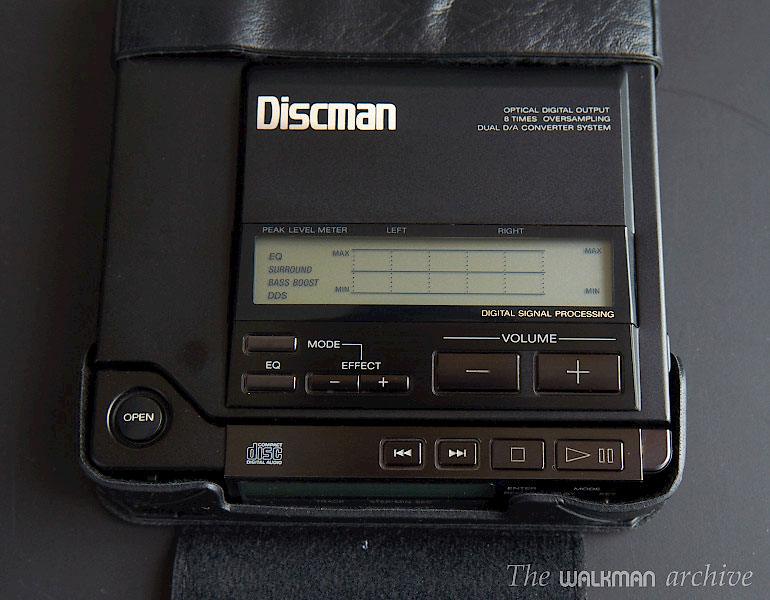
SONY Z555, the best Discman ever made.
So I did. I recorded the uncompresses sound test file generated with RMAA on a good CD-R, using my excellent Plextor recorder. I recorded it at low speed (just 8X) to be sure that a very low error level is introduced in the resulting disc. So I connected the Line OUT of the Z555 to the Line IN of the X-Fi sound card, disabled any EQ on the Discman, run the complete test, and this was the result:
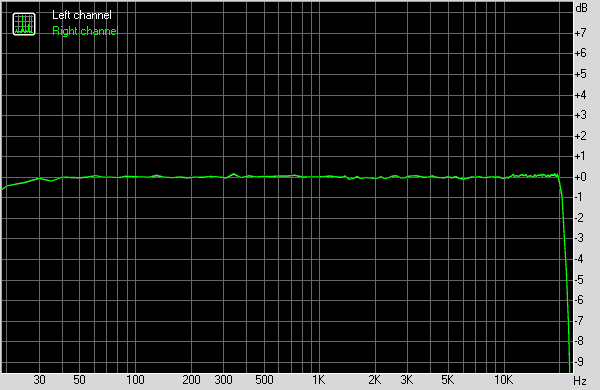
The SONY D-Z555, known for being the best Discman ever made has a response adecuate to its reputation.
Excellent performance for a 25 year-old portable player! It measured more than -93dB of floor noise, 0,787% of THD and 0,085% of ID + N, which is very good.
Then I thought it would be interesting to test how a Minidisc could perform and I took my good old Sharp MS-702H, the one and only Minidisc player I've had, which gave so many good moments:
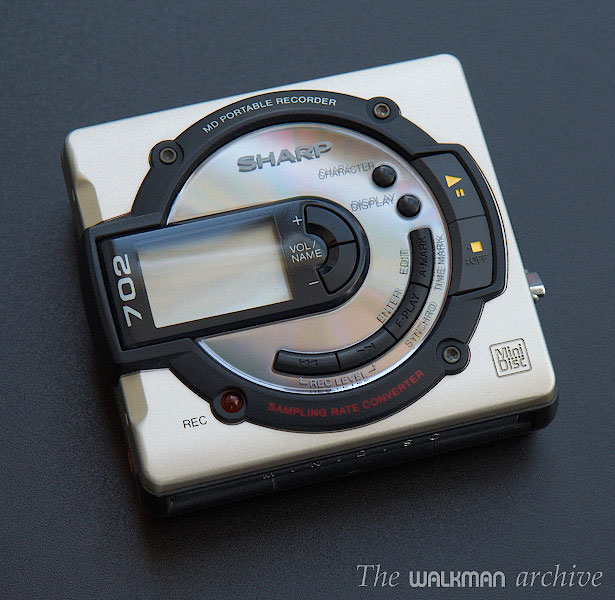
Sharp MS-702H
To perform the test, this time I recorded the sound file on a disc through the optical cable, so I avoided any digital to analog conversion. Sound is generated digitally in the computer, transferred digitally to the minidisc, recorded in this way and converted to analog only while playing. I disabled any equalization in the player and run the entire test on RMAA, so this was the results:
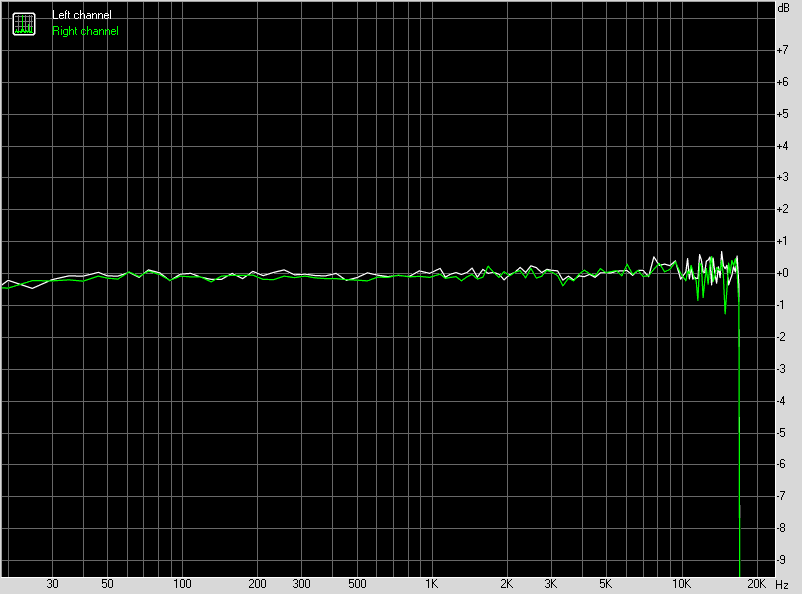
As I expected, the result is a bit worse than the Z555, because although lossy compressed music (as it is on a Minidisc) can offer very high quality, can't be as good as uncompressed music (as it is on a music CD). However, it's not as bad at all; in fact, this small player sounds awesome!
After all that, the last step is to be sure that I'm adjusting properly the output level of the player when doing all the measures. This will confirm me if RMAA software is normalizing the output level before perform the analysis. So I connected the Z555 to an CMoy Amp, which is a small, portable and very high quality amplifier.
I find very interesting a suggestion of Tuna:
"It was the first portable amplifier as far as I know. The design is not genuine but rather a copy of the famous Grado Labs RA-1 headphone amplifier. The creator if CMoy was trying to prove that RA-1 should not be so expensive and in fact, the parts cost around 10$. The RA-1 costs 400$"
This way I could push the output level up to 0dB when preparing the measure of a complete audio test.
 |
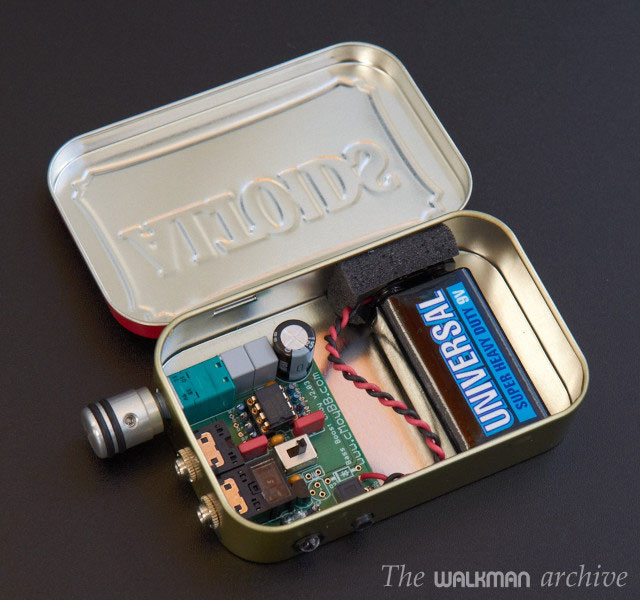 |
The CMoy amplifier is a high quality, small but powerful portable amp,
that has an excellent reputation for offering very high quality sound.
|
Although there many different implementations of this amp, my personal preference goes to the JDS CMoy, because they implemented an excellent bass boost feature. |
So, after running the complete RMAA test connectig the SONY Z555 directly to the line input of the X-Fi sound card (the output level barely arrived to -10dB) and doing it again by connecting the Z555 line out to the CMoy input and the output of if to the sound card, the results showed very similar values:
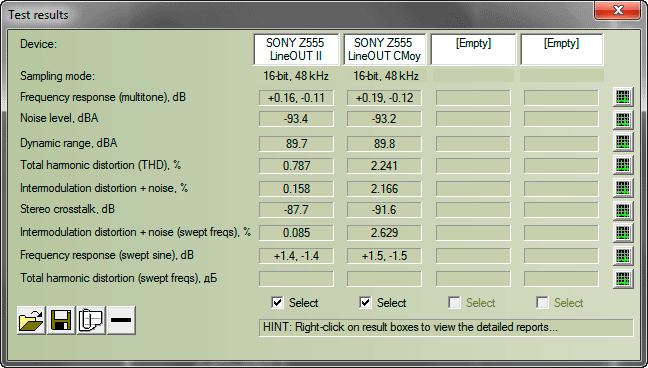
The results of comparing the repsonse of the SONY Z555 connected directly and through a CMoy amp.
The most interesting is that the frequency response and the noise level remains almost equal.
Here you can see the both FR curves:
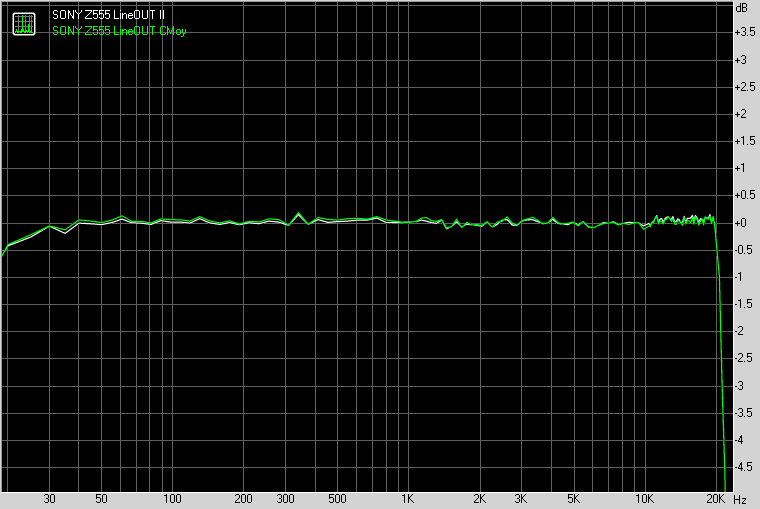
The frecuency
response of the Z555 is the same when measured directly or through a
CMoy portable amplifier.
Well, we have all the gear up and running; let's do the first measure on a tape!
Continue to part II >>>
|
![]()
![]()
![]()
